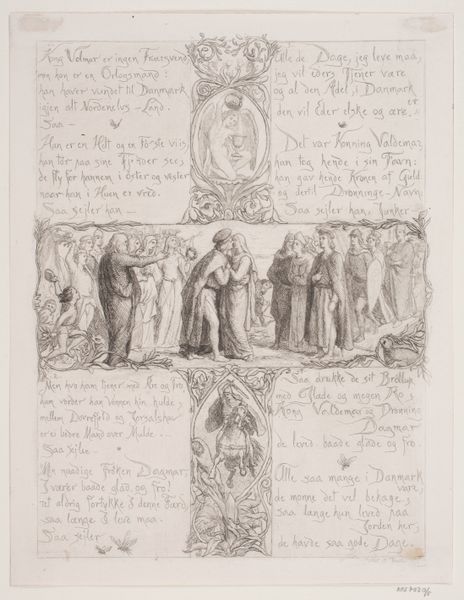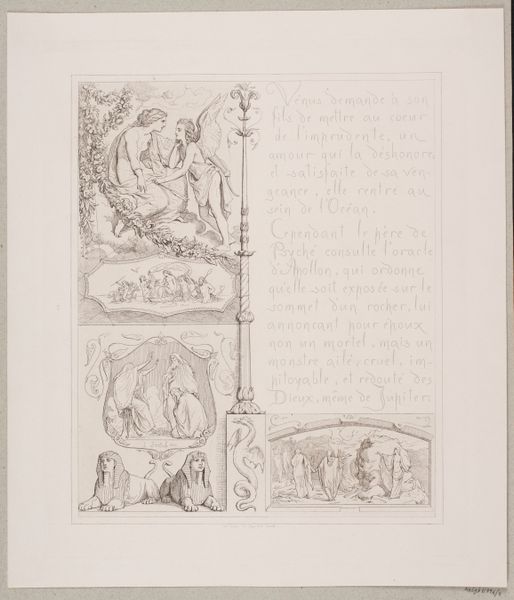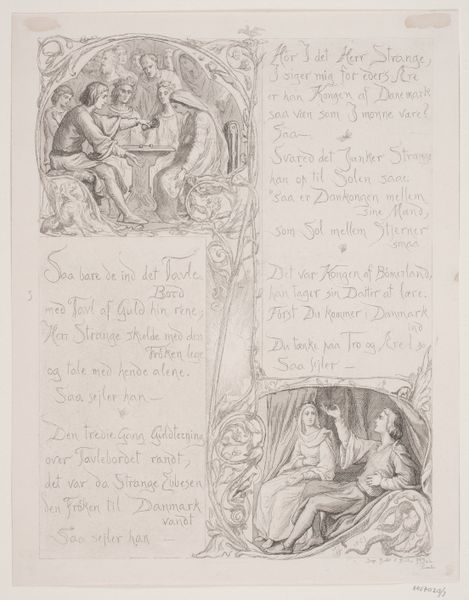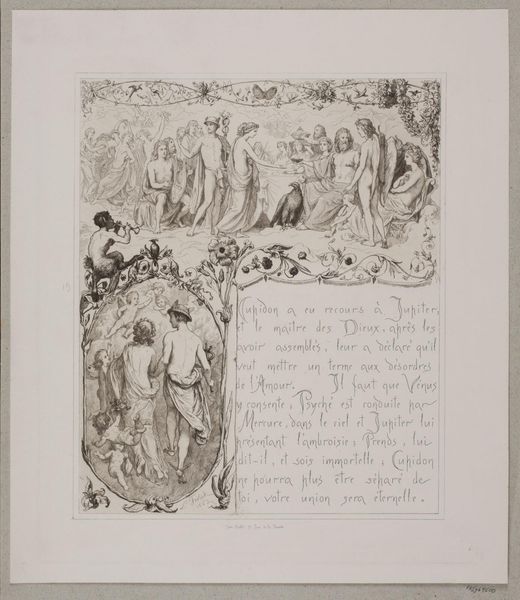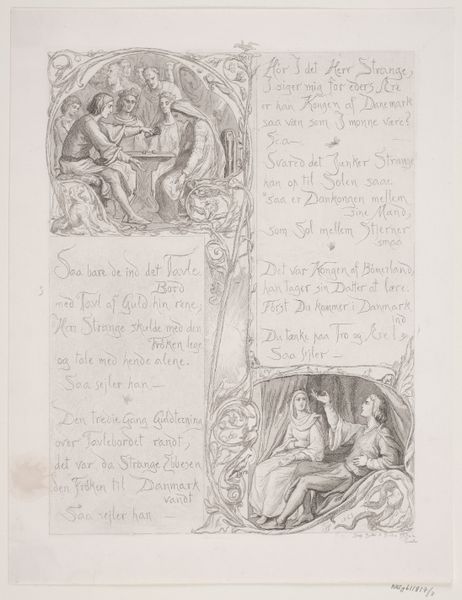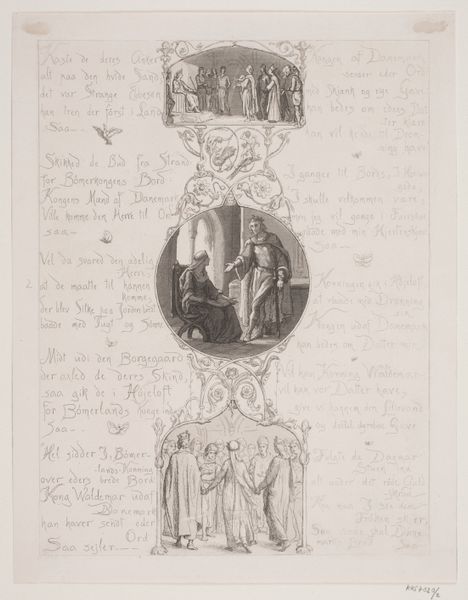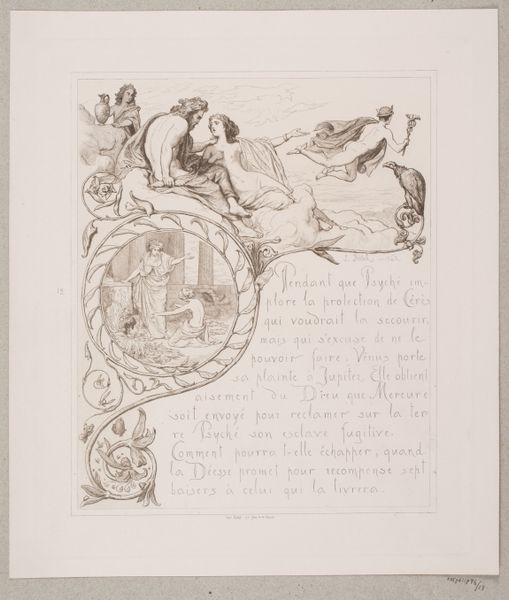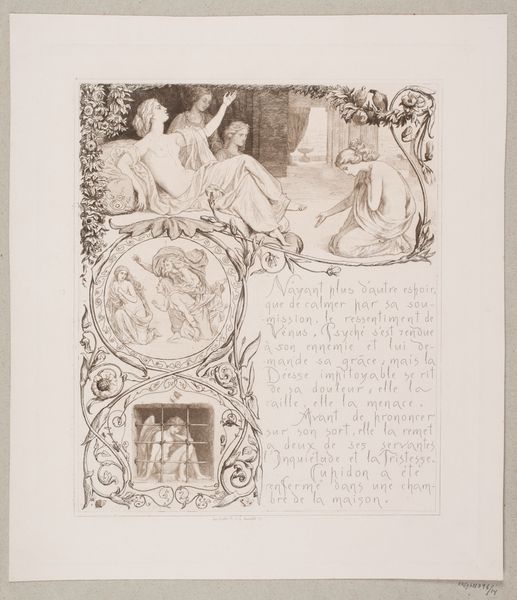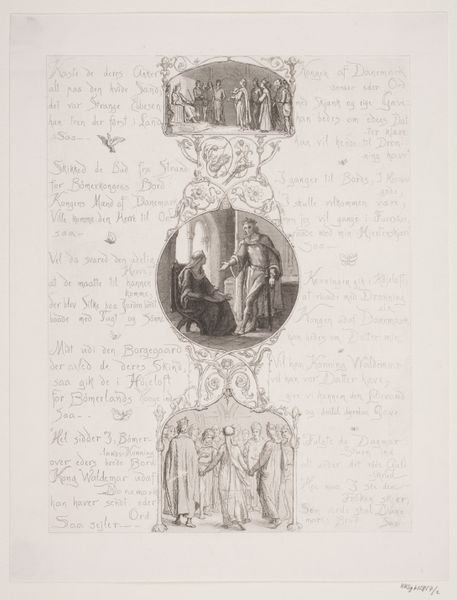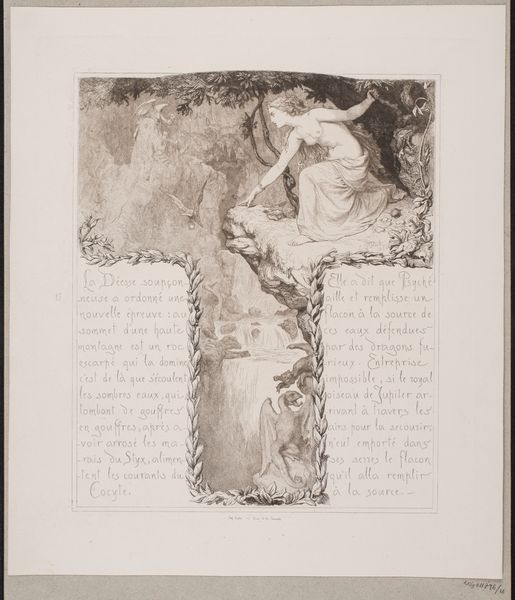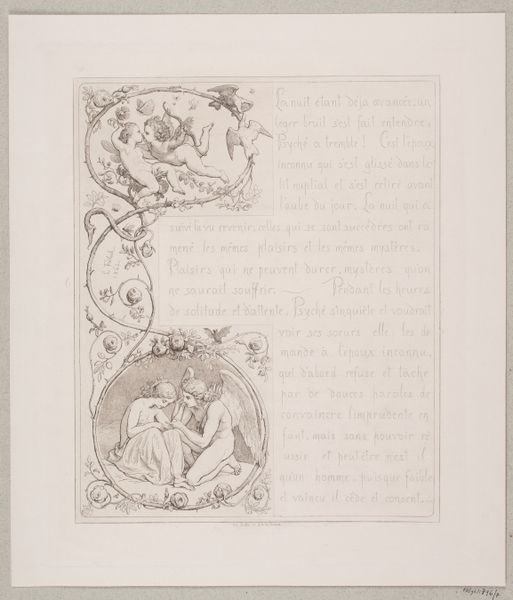
Illustration nr. 5 til "Visen om Dronning Dagmars ankomst til Danmark" 1863
0:00
0:00
Dimensions: 283 mm (height) x 218 mm (width) (bladmaal)
Curator: What a remarkable find. This is Lorenz Frølich’s Illustration nr. 5 til "Visen om Dronning Dagmars ankomst til Danmark," created in 1863. It's a pencil and engraving work, currently housed at the SMK in Copenhagen. Editor: It gives off this hazy, dreamlike vibe. I feel like I'm peering into a memory, a very formal, carefully constructed memory. All those tiny figures, it’s like a stage play condensed into a drawing. Curator: Indeed. Frølich was a master of historical narrative. He illustrates the ballad of Queen Dagmar, who was a significant figure in Danish history—known for her kindness and piety. Editor: Right, but those stories were often used to uphold very specific ideas about women, power, and national identity, weren’t they? Dagmar, as the "good queen," sets a contrast, perhaps unintentional, with figures who didn't quite fit that ideal, reinforcing normative gender roles of the time. Curator: Absolutely. The imagery reinforces those roles. Look at the central panel depicting her arrival, the way she’s presented…it's about humility and acceptance, adhering to tradition. Yet, if you look closer you may see Frølich was trying to recapture the spirit of an older northern European renaissance style—with echoes of Dürer, no less. Editor: You can definitely feel that tension between the historical narrative and the artistic style. But those ornate borders framing each panel are loaded with meaning, dictating our experience and emphasizing the staged and presented narrative nature of the subject, with what feels to me is a focus on control of the message. What I do find refreshing is that in spite of what comes off as such formality, he does include moments of intimacy, like in the centre frame in which it feels like a gentle familial connection or acceptance. Curator: Precisely. So, do we think the message still resonate with contemporary audiences? Editor: In its own way, yes. These visual devices speak loudly, as does the cultural fascination with powerful queens and noble women. And as we navigate contemporary social and political landscapes, works such as these prompt us to question whose stories get told and how they're presented, still carrying important questions relevant today.
Comments
No comments
Be the first to comment and join the conversation on the ultimate creative platform.
